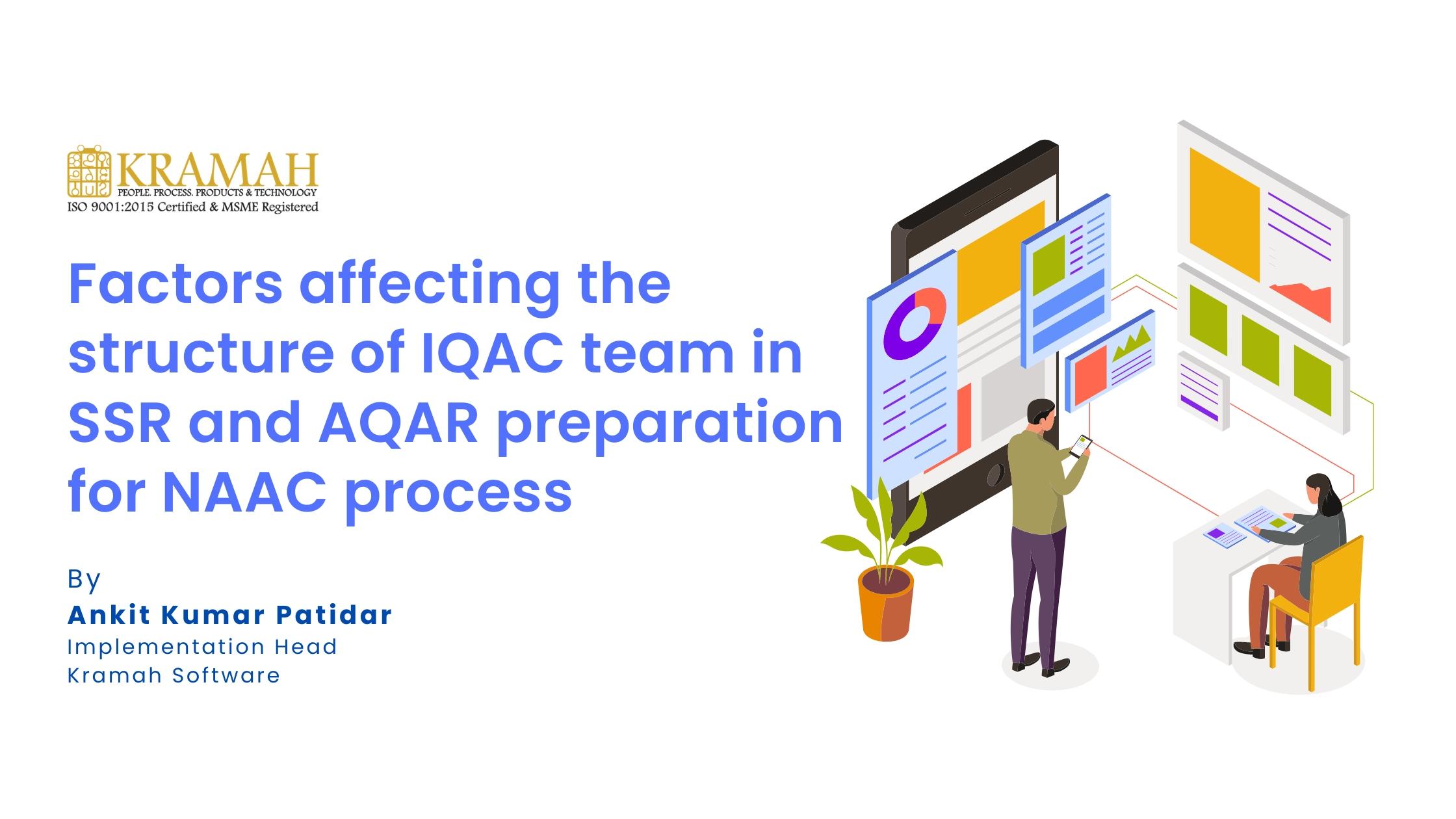Steps to finish the SSR submission using Ki-NAAC software within 30 working days
By,Ankit Kumar Patidar

To finish the SSR submission using Ki-NAAC software within 30 working days, you can follow the following steps:
Step 1: Prepare a list of criteria heads Use the provided format to create a comprehensive list of criteria heads. Utilize a Google Sheet for better coordination. Seek assistance from the Implementation Manager for detailed help. Google Sheet Link:- https://docs.google.com/spreadsheets/d/17bwDBp50veYeZEd5FAAdidL78sGmj6D5t4dIjE3WB3Y/edit?usp=sharing
Step 2: Decide on a suitable architecture after discussion Consider choosing either a 3-tier or 4-tier architecture. Refer to the provided blog for more information on these architectures.
Step 3: Prepare a list of participating departments and their representatives Compile a list of all departments involved in the SSR submission. Assign departmental representatives, and if necessary, select multiple representatives per department. Use the provided sheet for creating the list.
Google Sheet Link:- https://docs.google.com/spreadsheets/d/17bwDBp50veYeZEd5FAAdidL78sGmj6D5t4dIjE3WB3Y/edit?usp=sharing
Step 4: Assign QnM metrics to departments and determine submission deadlines Allocate all Quality and Quantity Metrics (QnM) to the respective departments based on requirements.
Request each department to provide the final submission date for their assigned metrics. Identify metrics that require data to be filled by the central team.
Google Sheet Link:-
https://docs.google.com/spreadsheets/d/17bwDBp50veYeZEd5FAAdidL78sGmj6D5t4dIjE3WB3Y/edit#gid=88737475
Step 5: Assign QlM metrics to team members and inform respective departments Assign Quality-linked Metrics (QlM) to the appropriate team members.
Identify the departments responsible for submitting input and supportive documents for each metric.
Notify all respective departments about their assigned metrics and responsibilities.
Step 6: Identify the team member responsible for submitting NAAC Part A data
Step 7: Provide training to team members on assigned metrics Conduct training sessions for all team members, focusing on their assigned metrics. Provide information about the NAAC manual and SOP manual to ensure everyone is familiar with the guidelines.
Step 8: Address specific document-related questions
Step 9: Arrange training on Ki-NAAC software usage Schedule training sessions or consult the Implementation Manager to learn how to submit and verify data using the Ki-NAAC software.
Step 10: Finalize three meeting dates for data review Set three review meeting dates to track the project’s progress.
Use the Google Sheets to update all relevant information. Create WhatsApp groups based on criteria for better coordination.
By following these revised steps, you can enhance the clarity and effectiveness of the process to finish the SSR submission within the given timeframe.

